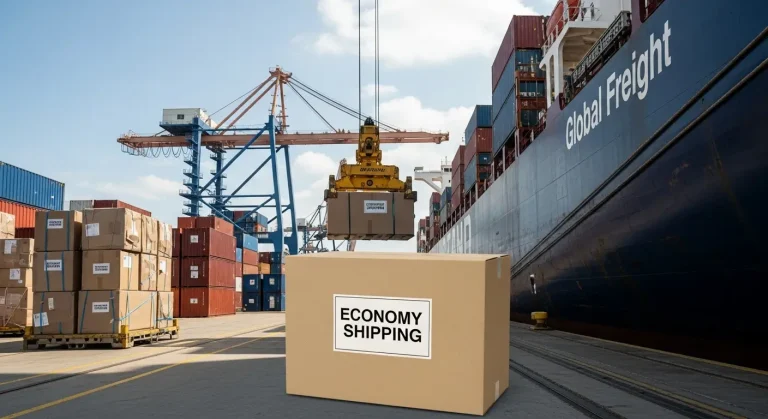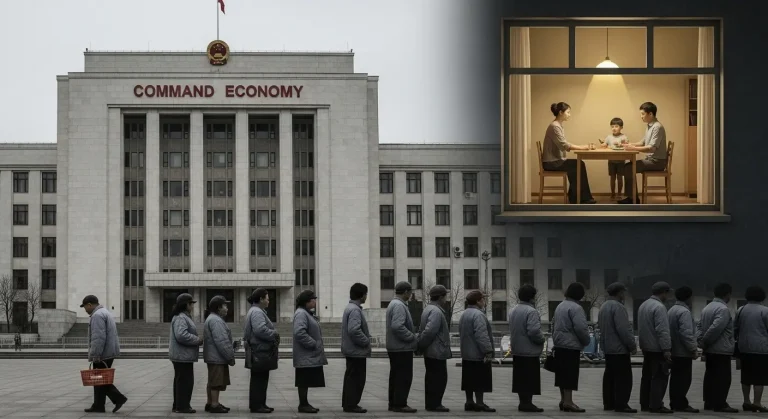A closed economy is one that operates entirely within its own borders—no imports, no exports, and no reliance on other countries for goods, services, or capital. So, when we ask what restriction would the government impose in a closed economy, the most accurate answer is: the government would prohibit trade with other nations. This restriction ensures that all economic activity—production, distribution, and consumption—occurs domestically, creating a self-contained system.
Understanding What a Closed Economy Means
In a closed economy, the nation’s government enforces a complete trade ban to prevent the inflow and outflow of goods and services. Essentially, the country functions as an economic island, producing everything it consumes and consuming everything it produces. No imports enter, no exports leave, and no foreign investments flow across borders.
Why the Government Prohibits Trade
There are several motivations behind this restriction:
- To maintain economic sovereignty and avoid external political or financial influence.
- To protect domestic industries from foreign competition.
- To reduce dependency on international markets for critical goods such as energy, food, or technology.
- To simplify national accounting and keep resources circulating internally.
What Happens Under This Restriction
The government imposes strict regulations that ban all international trade. Ports may operate only for domestic transport, customs regulations are rendered unnecessary, and currency exchanges for foreign transactions are restricted. Businesses and consumers depend entirely on internal markets to meet demand, which reshapes production priorities and pricing structures.
Key Restrictions Beyond Trade Bans
While prohibiting trade is the main restriction, it often leads to several other measures designed to support domestic stability and balance supply and demand.
1. Restrictions on Capital Flows
Governments in closed economies typically ban or limit foreign investment and borrowing. This prevents capital flight and keeps national savings within domestic borders. It also shields the economy from external financial crises, though it may stifle innovation and growth by reducing access to external funding.
2. Price and Wage Controls
Without foreign imports to stabilize supply, shortages may occur. To prevent inflation or exploitation, the government often introduces price controls on essential goods and wage regulations to maintain affordability. These measures keep the economy stable but can lead to inefficiency and black markets if overused.
3. Ownership and Production Controls
Some closed economies enforce state ownership or limit private ownership in sectors like energy, mining, and infrastructure. The purpose is to ensure national control over key industries and prevent private entities from engaging in external trade or alliances.
4. Restrictions on Labour and Technology Exchange
The government may control immigration, limit emigration of skilled workers, and ban foreign technical collaborations. This ensures that domestic expertise remains within the country, but it can also slow innovation and industrial progress.
Why Governments Enforce These Restrictions
A government’s decision to close an economy is rarely arbitrary. It often arises from strategic, ideological, or protective motives.
Economic Self-Sufficiency
A closed economy strives to become self-reliant. Every resource—from food and energy to technology—is developed and consumed domestically. This approach eliminates external vulnerabilities and makes the nation less dependent on global supply chains.
Protection of Local Industries
New or developing industries may struggle to compete against established global players. Restricting trade gives these industries breathing room to mature without the pressure of international competition.
National Security
In times of conflict or geopolitical tension, a country may close its economy to prevent strategic dependence on potentially hostile nations. Restricting imports and exports ensures control over vital goods and technologies.
Ideological Reasons
Certain political systems prefer isolation to maintain control over production and distribution. Governments might view self-sufficiency as a way to reinforce independence and resist capitalist or external influences.
Economic Effects of Imposing Trade Restrictions
Banning trade and related external flows dramatically reshapes the economy’s internal dynamics. While there are some advantages, the downsides often outweigh them over time.
Potential Advantages
- Greater economic control by the government.
- Stability against external shocks such as global recessions or trade wars.
- Growth of local industries that would otherwise be dominated by foreign competitors.
- Reduced vulnerability to foreign debt or currency fluctuations.
Negative Consequences
- Reduced efficiency due to lack of competition and specialization.
- Lower consumer choice and product quality since imports are unavailable.
- Slower innovation as exposure to global technology and trends is limited.
- Higher costs of goods and services because domestic production may be more expensive.
- Emergence of black markets, as citizens seek unavailable foreign products through illegal trade.
Examples of How a Closed Economy Functions
To understand the restriction better, let’s visualise how a fully closed system operates in everyday scenarios:
- A clothing company can source only domestic cotton and dyes, even if local materials cost more or are of lower quality.
- A technology firm cannot import microchips or sell its products abroad; it must rely solely on homegrown parts and customers.
- The government must ensure sufficient local food production, since no imports can supplement shortages caused by bad weather or crop failure.
This model pushes industries to adapt quickly and focus on domestic self-sufficiency, but it often leads to inefficiencies and resource constraints over time.
Comparing an Open and a Closed Economy
| Feature | Closed Economy | Open Economy |
| Trade | No imports or exports | Free flow of trade with other nations |
| Capital Movement | Restricted or banned | Freely moves across borders |
| Economic Risk | Isolated from global markets | Exposed to international cycles |
| Innovation | Slower due to isolation | Driven by global collaboration |
| Consumer Choice | Limited | Diverse due to imports |
| Industrial Growth | Protected but slower | Competitive and efficient |
A closed economy focuses on control, while an open economy thrives on exchange. The key restriction—the ban on trade—defines this entire contrast.
Why the Restriction Matters in Economic Studies
Understanding this trade restriction is crucial because it shapes macroeconomic concepts like gross domestic product (GDP), national income, and domestic savings-investment balance. In a closed economy:
- GDP equals total domestic consumption, investment, and government spending (since exports and imports are zero).
- The savings-investment relationship becomes internal; domestic savings must fund domestic investment.
- The government takes on greater responsibility for balancing production and consumption.
This makes the system simpler in theory but more fragile in practice, as any imbalance cannot be corrected through trade adjustments.
Practical Implications for Citizens
Under such restrictions, the lifestyle of citizens changes significantly:
- Imported luxury goods disappear from the market.
- Prices for certain items rise due to scarcity.
- Employment patterns shift toward domestic manufacturing and agriculture.
- The government becomes deeply involved in every aspect of economic life, from what industries produce to what consumers can buy.
While some citizens may value the sense of independence, many experience limited opportunity, less innovation, and fewer global connections.
Why the Closed Model Is Rare Today
Modern economies are deeply interlinked through trade, technology, and finance. Complete isolation has become nearly impossible without sacrificing growth and development. However, traces of closed-economy behaviour still exist in policies such as:
- High tariffs and import quotas.
- Strict capital controls.
- Restrictions on foreign ownership.
- Preference for local manufacturing over imports.
These are partial applications of the same restriction—a controlled form of economic closure meant to protect domestic interests without total isolation.
Common Study Question Explained
A popular academic question reads:
“What restriction would the government impose in a closed economy?”
The correct answer is:
The government would prohibit trade with other nations.
Alternate options, such as setting prices for imported goods or preventing private ownership, might appear in similar questions, but they describe features of other systems (like command economies), not closed ones. The trade ban remains the defining and most accurate response.
Step-by-Step Thinking for Economic Scenarios
When analysing a country’s policy to determine whether it’s closed or open:
- Check trade data – Are imports and exports taking place?
- Look at foreign investment – Is capital entering or leaving the nation?
- Review ownership laws – Are key sectors accessible to foreign companies?
- Assess currency policies – Can citizens buy foreign currency or goods?
- Identify government goals – Is self-sufficiency the stated objective?
If most or all of these show restrictions, the country leans toward a closed economy.
Real-World Lessons from Closed Economies
Though rarely pure in form, past examples show what happens when trade is heavily restricted:
- Domestic industries grow rapidly at first but plateau without external competition.
- Shortages become common, especially for high-tech or resource-intensive goods.
- Citizens face limited access to innovation and international culture.
- Governments must spend enormous resources maintaining control and balance.
Over time, most nations transition toward openness, realising that cooperation and exchange drive sustainable growth.
The source of this article is FinTechRevo
FAQs
What is the main restriction in a closed economy?
The government prohibits trade with other nations, ensuring all goods and services are produced and consumed domestically.
Can a country function entirely without trade?
It’s possible in theory, but practically unsustainable. Modern economies depend on global supply chains for essential resources.
Are closed economies the same as command economies?
Not exactly. A command economy focuses on state control over production and pricing, while a closed economy focuses on eliminating foreign trade.
Why might a country choose to remain closed?
To protect local industries, maintain sovereignty, or resist foreign influence during political or economic crises.
What happens to imports in a closed economy?
Imports are banned. If foreign goods appear, they enter through illegal markets or state exceptions.
Summary
The defining restriction a government imposes in a closed economy is a ban on trade with other nations. This isolation aims to achieve economic independence and full control over domestic activity. However, such a system comes with significant trade-offs—limited efficiency, slower growth, and reduced consumer choice.
While it can safeguard sovereignty and foster local development, a completely closed system struggles to thrive in today’s interconnected world. Ultimately, the lesson remains: economies grow stronger not through isolation, but through strategic openness balanced with internal strength.




